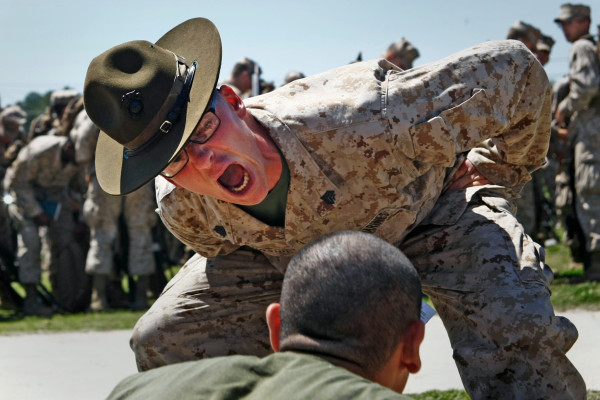The word “sergeant” comes from the French word “sergent,” meaning “a servant, valet or court official,” which in turn derives from the Latin word “serviens,” which also means “servant” or “soldier.” The English first borrowed the word from the French in the late 13th century to refer to both military servants who accompanied knights and those in charge of enforcing tribunal judgments.
edThe term “sergeant” can be given two main definitions; the first being a military role and the other a governmental role. Whereas technically the two roles were not mutually exclusive, they were very different in roles and duties. The soldier sergeant was a man of what would now be thought of as the ‘middle class’, fulfilling a slightly junior role to the knight in the medieval hierarchy. Sergeants could fight either as heavy to light cavalry, or as well-trained professional infantry, either spearmen or crossbowmen. Most notable medieval mercenaries fell into the ‘sergeant’ class, such as Flemish crossbowmen and spearmen, who were seen as reliable quality troops. The sergeant class were deemed to be ‘worth half of a knight’ in military value. The office originated in medieval England to serve the Sovereign in a police role, much like a bailiff in more recent times. Indeed, the sergeants-at-arms constitute the oldest royal bodyguard in England, dating from the time of King Richard I (around 1189) as a formed body.
The sergeant-at-arms was a personal attendant upon the King, especially charged with arresting those suspected of treason. Richard I had 24 with him on the Crusades. They were formed into a 20-strong Corps of Sergeants-at-Arms by King Edward I in 1278, as a mounted close escort. In 1399 King Richard II limited the corps to thirty sergeants, and King Charles II had sixteen. The number was reduced to eight in 1685 and since then it has gradually declined.
The original responsibilities of the sergeant-at-arms included “collecting loans and, impressing men and ships, serving on local administration and in all sorts of ways interfering with local administration and justice.” Around 1415, the British House of Commons received its first sergeant-at-arms. From that time onwards the sergeant has been a royal appointment, the sergeant being one of the Sovereign’s Sergeants-at-Arms. The House of Lords has a similar officer.

Photo by Lance Cpl. David Bessey. source
The formal role of a sergeant-at-arms in modern legislative bodies is to keep order during meetings, and, if necessary, forcibly remove any members who are overly rowdy or disruptive. A sergeant-at-arms may thus be a retired soldier, police officer, or other official with experience in security. In recent times, however, the positions have often become quite ceremonial in some countries, with actual ability to eject members not necessarily being a primary requirement. The Sergeant-at-Arms of the House of Commons has general charge of certain administrative and custodial functions, as well as security within the chamber of the House.
Medieval Sergeants
Sergeants who accompanied knights were generally mounted soldiers who lacked the means to purchase the equipment and hire the retainers necessary to be recognized as knights in their own right. A knight’s sergeants held a variety of duties, ranging from tending to and fighting alongside the knight during combat to pressing and leading groups of peasants into battle. In this context, the term sergeant became associated with a leader who trained and disciplined soldiers.
The Modern Sergeant
The role and rank of sergeant evolved as modern armies developed. The rank of sergeant as a non-commissioned officer – experienced enlisted soldiers given leadership responsibilities – was gradually adopted by all major European armies, beginning in the 16th century. The U.S. Army and Marine Corps included various types of sergeants in their ranks from their inceptions in 1775. Likewise, the U.S. Air Force retained the term sergeant for its NCO corps when it was separated from the Army in 1947.

